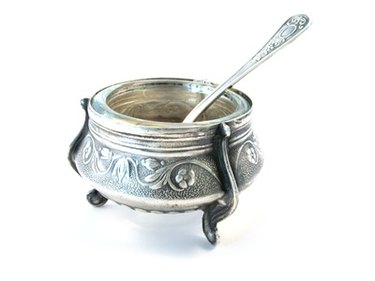
In colonial times silversmiths were both skilled artisans and bankers. Since silver and things made of silver were a form of money, people could bring their silver coins to a silversmith and have him melt the silver and fashion it into an object. As such, a silversmith's trade was vitally important to not only the silversmith but the entire community as a whole. The tools of colonial silversmithing were varied and required much skill to use.
Furnace
Video of the Day
Before the smith could shape the silver into any meaningful form, the silversmith first had to melt it down within a furnace. Using a crucible or ladle to hold the silver, he would put the metal into the furnace at nearly 2,000 degrees. In colonial times, the furnace was typically heated using bellows, pumped by an assistant or apprentice. The smith would melt down various kinds of silver, including coins and other small items. Later in the process of refining silver, the furnace was used again to heat up a silver ingot for further processing.
Video of the Day
Mold
The silversmith used more than one mold when refining silver. The first mold was an ingot mold, used directly after the silver was melted for the first time. He allowed the metal to cool in the mold and then would later reheat it for further refinement. The smith would cast some specific pieces into molds, such as handles and spouts, and then solder them to the final silver piece later in the process.
Hammer and Anvil
The silversmith would strike the hot, malleable silver with a hammer against an anvil to beat it into the desired shape. Different hammers were used in different parts of the process. Some hammers were specifically used for shaping the metal in certain ways, such as "raising hammers," while other small, smooth hammers were used for making the surface very smooth, or "planishing."
Scribe
A tool for decoration or for leaving a signature on finished items, a scribe engraved patterns and designs into the finished silver. The silversmith accomplished this either by scraping the scribe along the surface or by hammering the scribe into the silver very lightly to make tiny indentations. Scribes are long and thin sticks, sometimes tipped with a hard material. In colonial times, they were typically constructed of a metal, such as cast iron and also sometimes of wood. Occasionally, the smith might also use acid to etch designs into the silver.